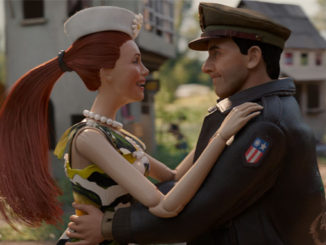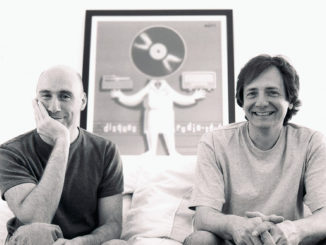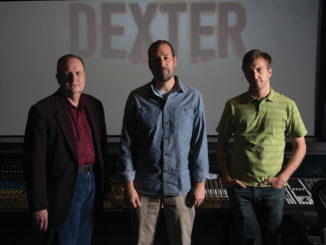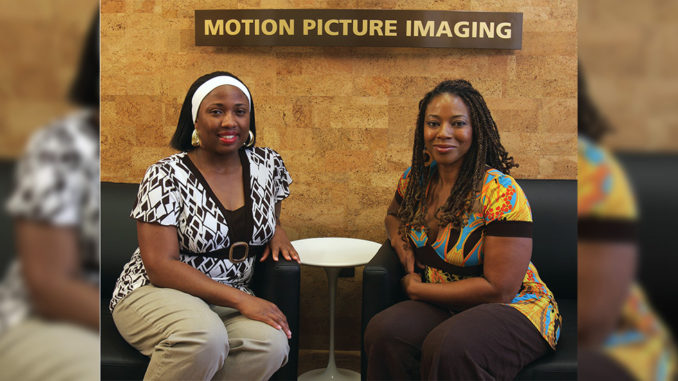
by Michael Kunkes
Watching movies and TV shows all day––and getting paid for it–– sounds like a dream job, but it’s serious work for quality control and videotape operators. Both are technical jobs, but the digital age has morphed them into a way more creative and challenging endeavor. A highly trained QC operator has to search for and identify a huge range of digital, film and audio anomalies that must be corrected before an item moves on to a tape operator for high definition (HD) duplication, most often in HDCAM SR format, or downcon- version to standard definition (SD) tape formats such as Digibeta or DVCAM.
For QCs, the job begins when they receive a tape and work order––usually in HDCAM SR––from the telecine depart- ment. Depending on the scope of the work order, they seek out such problems as digital hits and pixilation, digital video and audio break-up, audio mutes, ticks and dropouts, out-of-sync audio, emulsion damage, scratches, stains, missing frames, visible production equipment and crew, incorrect sizing and film frame edges. Even a missed pan on an aspect ratio conversion, where a single frame is out of position, can send a tape back to telecine for correction. Errors can come from the original film or audio elements (which can go back to the original mag tape or film optical track) or defective source tapes. They can even be related to the telecine transfer itself. Sometimes, only the trained, patient eye of the QC operator stands between a pristine home video or digital cinema theatrical release and an upset client or disastrous screening.
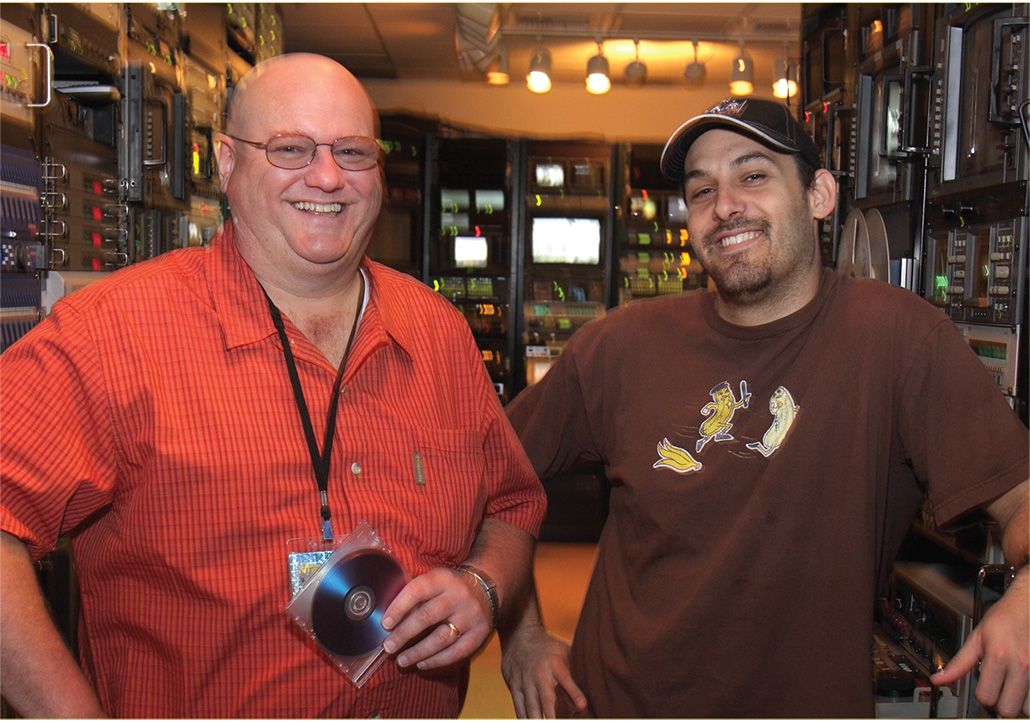
Videotape operators, while they handle only limited QC functions, perform the final duplication and are generally the last stop on the way to shipping. They are held to just as high a standard of performance, as tape ops have the ultimate responsibility for dubbing or cloning SD and HD masters that are used for a hundred different functions, from edited TV shows, to foreign versions and airline cuts, working with a huge variety of source formats. They check slates, make sure head formats are correct and often monitor as many as a half-dozen machines at once.
Cecilia Pierce has been in the QC department at Warner Bros. Motion Picture Imaging since 2002. Pierce says that even if several operators are looking over a master, a top QC person needs to be able to pick out problems no one else can find. “On a typical master, there can be a lot of things that come up––a piece of equipment in the shot, a boom mic, and sometimes even a crew member in the shot,” Pierce explains. “That’s a serious thing, but it’s also pretty funny to spot someone on camera who obviously isn’t supposed to be there.”
The QC operator is always the first to identify problems with the master, so the first pass is the most complicated, accord- ing to Pierce. “We check everything—the beginning of the tape for the correct slate, labels and even studio logos––because a property may have been acquired from another studio or have multiple produc- tion companies,” she says. “We look at the main titles and end credits, making sure they are positioned correctly within the safe title area measured by the Evertz graticule generator on the monitor; then when the program or feature starts, we use the same generator to measure the aspect ratios [2.40 letterbox, 1.78, 1.85 matted or 1.37], and check the frame edges, making sure that portions of the left or right side of the picture aren’t missing.”
Even a missed pan on an aspect ratio conversion, where a single frame is out of position, can send a tape back to telecine for correction.
Using Tektronix or Leader scopes, QC operators take video measurements such as horizontal and vertical blanking (video lines containing no information, to which information such as time code, test sig- nals, closed captions and subtitles can be added later on), which have to be within certain ranges established by the National Television Standards Committee (NTSC). “These measurements apply to television, video and DVD playback,” Pierce adds.
After that first pass, the QC operator will create a report that is typically generated as an Excel spreadsheet that can be as much as five pages long. “Some items are simple notations, some are outright rejections of the tape––and those will go back to either the colorist or the audio department,” says Pierce. “Depending on the title’s budget, some items will be left as is, while others will be corrected and come back for another check.”
As long as the laundry list of items that a QC operator checks for can be, it gets even longer when monitoring an HD tape. “In the HD world, everything is incredibly blown up and sharp; the viewer notices everything,” says Pierce. “If a bug is flying through the scene, we have to note and report it, so that it’s not mistaken for some weird artifact. We have to be as specific as possible so that in the end, if the person on that final QC sees something, it can be referenced back and either dealt with, or eliminated as a problem.”
Not every project calls for that kind of minute detail; it all depends on the project and the scope of the work order. “QC’ers and tape ops will work on theatrical titles, cartoons, TV shows, compilation sets––in short, a very mixed bag,” Pierce explains. “A big-budget release will require that every speck of dirt on the film be cleaned, but on some older TV shows and features that are being remastered, they will only fix what is most distracting. These titles take a lot less time to complete.”
Paramount Studios is a family affair for QC operator Giancarlo Shammas. His father, Victor, is a librarian at the studio, and his uncle Robert is a project manager for Digital Mastering on the lot. Shammas, who says he is more of a “Tech QC,” has been at the studio since 2000, after holding QC positions at Sunset Post and Foto-Kem Labs.
“We’ve seen drastic changes in our duplication workflows like the addition of encoding and the streaming of files.”-Cary Nance
“We do a lot of censored run-time ver- sions and television formatted work for international and overseas,” says Shammas, who also is glad to see the D5 format being used less and less in favor of HDCAM SR. “The tapes and machines were unstable, and you will get these big green blocks of pixilation that are difficult to catch because they are within one of two video fields in the frame, at 24 and 30 frames, and go by really quickly. If you blink, you can miss them.”
Back at Warner Bros., tape operator Lota Hadley has been an IA member for almost 30 years, beginning in the film lab at MGM Studios when she was 17 and two months out of high school. She was originally with Local 683 and became a tape operator in 1999, a year after that classification joined the Guild. She also has a second life as an independent pro- ducer, and is currently working on a pair of features—a horror opus entitled Sin-Jin Smyth, as well as Little Iron Men, about Japanese-American soldiers in World War II––both through her production company, Snapkick Productions.
At Warners, she sometimes finds her- self being re-introduced to material that she originally mastered at MGM, before the former acquired the latter’s television library. The changes, she says, have been huge. “Sometimes we will get material to transfer that goes back to the original film, simply because a third-generation tape is not the best medium to re-master from. The sound may come from one place, opticals from another,” explains Hadley. “Sometimes, we’ll even use an old D-1 machine, or some other ancient boat anchor, before down-converting to create an HDCAM SR master.”
“We are beginning to work with all kinds of tapeless formats, so I think describing ourselves as tape operators is a hindrance. It’s an old term and the job cuts a much wider swath than that today.” – John Hoffman
Though Digibeta is becoming the standard for DVD mastering, Hadley still sometimes prefers the decade-old old Ampex DCT format, which is being phased out as Ampex goes through a Chapter 11 re-organization. “On DCT, you can edit either video field one or field two,” she says. “In Digibeta, if you start in field two, you have to finish in field two, which makes mastering very cumber- some if you are mastering for NTSC. Your edit can get really huge because you have to go scene by scene to find the next indicated edit in field two when doing inserts for fixes or concealments––or pulling scenes for clip reels.”
At Paramount Technical Services, John Hoffman, an industry veteran who has worked at the studio since 1990, is a videotape operator in a department that has scaled down considerably since the studio’s television library was taken over by CBS in 2006. However, according to Hoffman, the licensing of feature films from the Paramount and DreamWorks libraries keeps a heavy flow of material coming to his department. “Each market, domestic or international, has different technical requirements,” he explains. “We are a worldwide operation, and will provide licensees with whatever their audio, video, captioning or encoding requirements are.”
Sometimes, Hoffman says, pulling together elements for those markets requires some hunting. “We’ll use HDCAM SR, Digibeta, Beta SP and even one-inch as source elements, depending on who the licensee is,” he says. “For example, for a new Latin market, we might have a great-looking print that we transferred a year ago, but no new Spanish-language audio. That might have to come from a 20-year-old one-inch master, which we will marry to the picture. And the client will have a pretty high-end print that meets his requirements.”
Hoffman explains one difference between the jobs of QC and videotape operators: “Unlike QC operators, we are usually running three or more jobs at a time, so we don’t have the luxury of watching every tape from start to finish. The great thing about the digital machines is their improved ‘error loggers,’ which will often flag major problems such as tape damage, electronic bumps, etc., that we don’t always see,” he adds. “Old analogue machines don’t have that capability. I feel that as technology changes and becomes less tape-based and more file and file sharing-based, it just adds creative opportunities to learn new skills.”
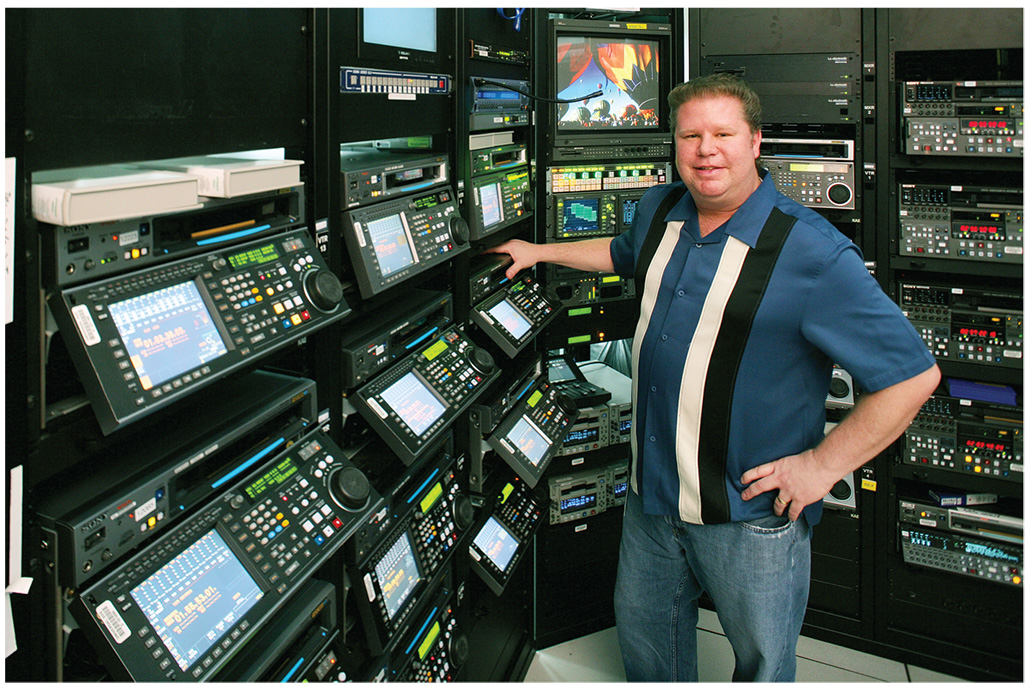
Cary Nance is a veteran tape operator who has been in NBC Universal’s Digital Services division for six years. He works extensively on submastering titles from the vast Universal and NBC Television libraries and indicates that 90 percent of the source masters now arrive on Digibeta and the rest on D5 and other miscellaneous formats. “We assume that when a master comes to us that it’s good to go ahead and dub, which we do in up to 65 different territorial masters,” says Nance. “Everything comes into us with a report from QC, telling us if there are any problems and what we should be looking for.”
Though QC would seem to be the more creative job, it has traditionally been used as a stepping-stone position to becoming a full tape operator. “Like everyone else, I learned QC first and that was my training ground for becoming a tape operator. QC gave me an eye for detail that has served me well,” says Linda Ferguson, a tape op at Worldwide Services, Inc. in Los Angeles, a division of Modern VideoFilm. Ferguson specializes in foreign language audio lay backs for DVD mastering, recording audio tracks directly into ProTools. “Sync has never been an exact science with layback on foreign versions,” she adds. “You get the sound effects in sync, and the dialogue will follow in—hopefully.”
Looking forward, Hoffman offers an opinion: “We are beginning to work with all kinds of tapeless formats, so I think describing ourselves as tape operators is a hindrance. It’s an old term and the job cuts a much wider swath than that today. I actually prefer the term ‘media operator’ as being more reflective of what we do.”
Nance also knows that the job is changing, and that today’s tape operator is not someone who pushes two buttons between a source recorder and a duplication machine and monitors a scope. “The tape operator today must have a strong working knowledge of HD formats and specifications, a variety of scopes, conversions, 4:2:2 and 4:4:4 digital video sample formats, hi-def captioning, subtitling and video encoding used to create MPEG2 or WMP formats for digital dailies that are used for viewing by studio executives.
“Most importantly, we are a mastering facility, and put out the highest quality product for our clients, so we have to keep up with all new workflows,” he continues. “We’ve seen drastic changes in our duplication workflows like the addition of encoding and the streaming of files. Though we still make Beta SPs and even VHS cassettes for composers and others, we are moving to a tapeless workflow.”



